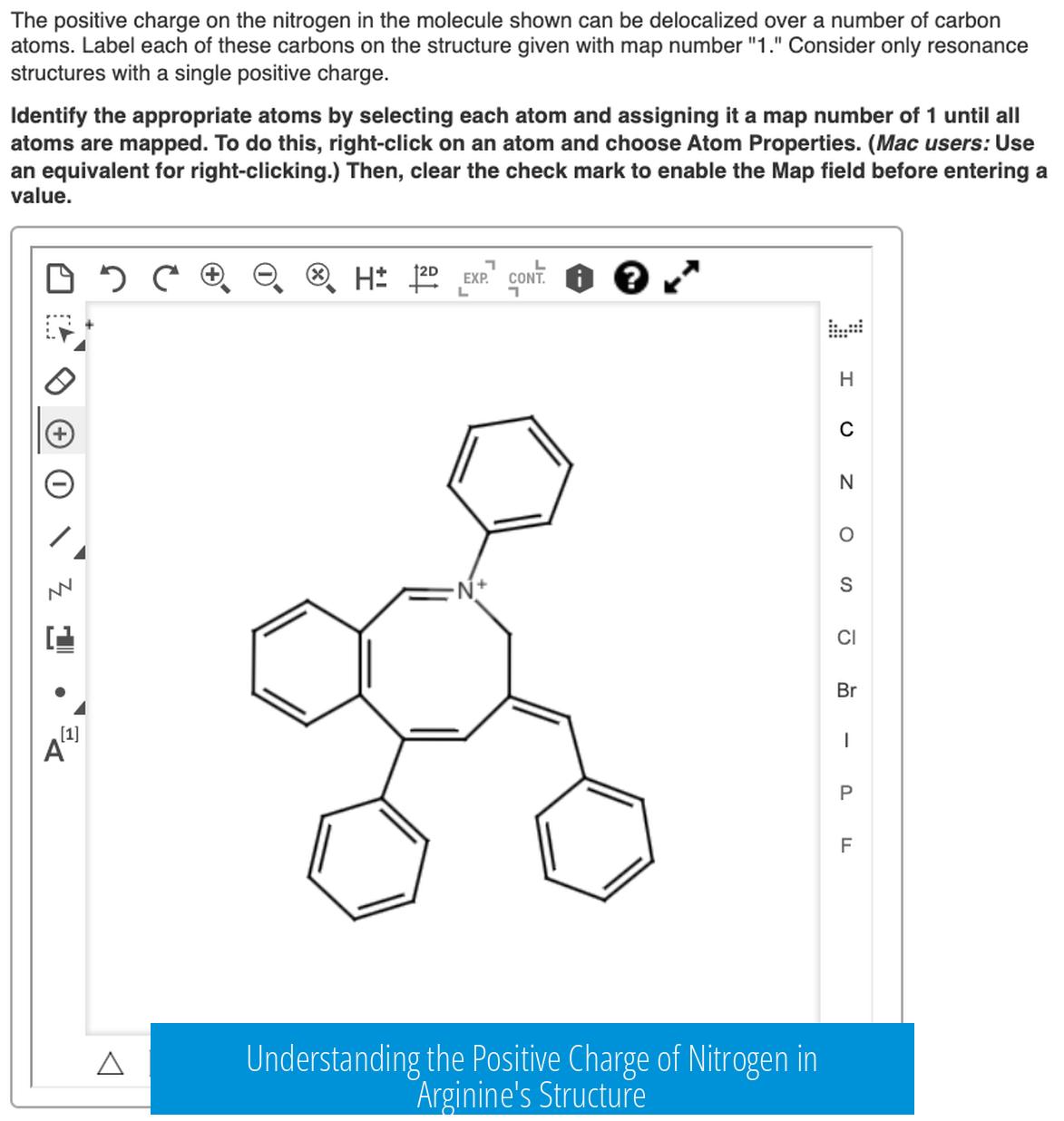Understanding the Positive Charge on Arginine’s Nitrogen
The positive charge on the nitrogen atom in arginine arises because this nitrogen forms four covalent bonds, one more than its typical three, resulting in a formal charge of +1. Unlike usual nitrogen atoms that have three bonds and one lone pair, here nitrogen shares its electrons differently, causing an electron deficiency localized on the nitrogen.
Nitrogen’s Normal Bonding and Electron Count
Nitrogen normally has 5 valence electrons. It tends to form three bonds and holds one lone pair, maintaining an octet with eight electrons shared or owned.
- Each bond involves two electrons shared between atoms.
- Nitrogen typically “owns” five electrons: three from its bonds and two from its lone pair.
In this state, nitrogen has no formal charge because the number of electrons it owns equals its valence electrons.
How Nitrogen in Arginine Is Different
In arginine, the nitrogen in question forms four single bonds—two to carbon atoms and one each to hydrogen atoms.
- There are no lone pairs on this nitrogen.
- It participates fully in bonding, sharing electrons with four neighbors.
This means nitrogen “owns” only 4 electrons now—one from each bond—fewer than its 5 valence electrons.
Formal Charge Explained
The formal charge formula is:
Formal charge = (Valence electrons) – (Nonbonding electrons) – (Bonding electrons / 2)
| Parameter | Value for this nitrogen |
|---|---|
| Valence electrons | 5 |
| Nonbonding electrons | 0 |
| Bonding electrons | 8 (4 bonds × 2 electrons each) |
Calculating: 5 – 0 – (8/2) = 5 – 4 = +1 formal charge.
Effect on Electron Density
This formal positive charge means the nitrogen has fewer electrons localized on it than the number of protons in its nucleus. It isn’t losing electrons but sharing them so evenly in four bonds, the electron density “owned” by nitrogen is reduced.
As a result, the positive charge “from the core” of the nitrogen becomes apparent and remains fixed on that nitrogen atom.
Key Takeaways
- Nitrogen typically forms 3 bonds and owns 5 valence electrons.
- In arginine’s side chain, nitrogen forms 4 bonds and has no lone pairs.
- Sharing electrons in 4 bonds reduces electrons localized on nitrogen to 4.
- This causes a formal charge of +1 on nitrogen.
- The positive charge results from the difference between protons and electrons “owned” by nitrogen.
Why is the nitrogen in arginine positively charged?
The nitrogen forms four bonds instead of three. It shares more electrons than usual, so it “owns” fewer electrons than protons. This causes it to have a positive formal charge of +1.
How do you calculate the formal charge on nitrogen in arginine?
Nitrogen starts with 5 valence electrons. It forms 4 bonds and no lone pairs. Counting electrons on its side of bonds gives 4, so formal charge = 5 – 4 = +1.
Does nitrogen lose an electron to become positively charged?
No. Nitrogen doesn’t lose electrons. It shares electrons among four bonds, which reduces electron density on nitrogen, leading to a positive charge from the proton’s influence.
Why can’t nitrogen have more than 8 electrons in arginine?
Nitrogen is a second-row element and follows the octet rule. It cannot expand its octet beyond 8 electrons, so it shares electrons via bonds but never exceeds 8.
What causes the positive charge to “shine through” on nitrogen?
The positive charge comes from nitrogen having one fewer electron localized to itself than protons in its nucleus, due to sharing electrons in extra bonds.





Leave a Comment